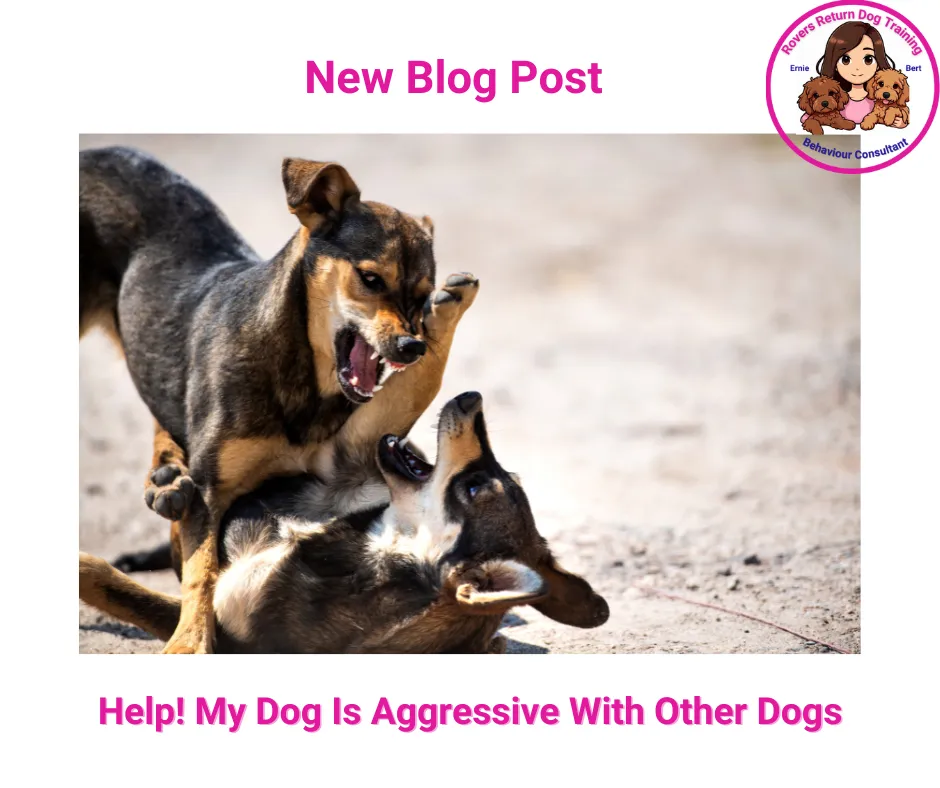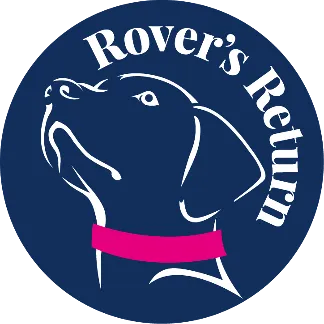Book a FREE 1:1 Assessment Call By Clicking HERE
Specialising In Dog Reactive Behviour
Accredited by APDT, ABTC and UK DOG Behaviour and Training Charter
Qualified and Experienced
Force Free Trainer and Behaviourist
Dog Training Leicestershire Educational Blogs

Help! My Dog Is Aggressive With Other Dogs
“Reactive behaviour can manifest in various ways such as growling, barking, lunging or even biting if the dog feels at risk. The good news is that this behaviour can be changed with the right training and patience. - Sam Hughes- Head Trainer
How Do I Stop My Dog from Being Aggressive with Other Dogs?
Introduction:
As a dog owner, it can be distressing to see your friend exhibit aggressive behaviour towards other dogs. You know that your dog is loving and friendly and that they are struggling to cope, and other dog owners avoid you.
Reactive behaviour can manifest in various ways such as growling, barking, lunging or even biting if the dog feels at risk. The good news is that this behaviour can be changed with the right training and patience.
In this blog post, we will explore how to train a perceived aggressive dog to be with other dogs.

Understanding Their Behaviour Is The Key To Success.
Understanding Dog Aggression
Before we delve into the solutions, it's important to understand why your dog might be acting this way.
Perceived aggression in dogs often stems from fear. Some dogs may also act out due to underlying medical conditions or if they feel their resources (like food or toys) are threatened.
It's crucial to identify the root cause of your dog's behaviour so you can address it effectively. If your dog’s aggression seems sudden or unprovoked, it’s advisable to consult a vet as there could be an underlying health issue causing discomfort and making them irritable.
Most people believe that you need to train dogs who are reacting toward other dogs by putting them in a group and getting used to the dogs.
Training Techniques for Aggressive Dogs
1. Give them space away from triggers
Your dog may be reacting due to a negative association, maybe due to being attacked or a bad interaction with a dog. Or a lack of effective socialisation in the early period of their lives. They may be anxious overall.
One of the worst things that you can do is to continually put them in situations where they cannot cope. They will either escalate their behaviour or shut down which is much harder to work with.
Work on training at home. Teaching them out of the situation and giving them space away from triggers whilst you work on their behaviour works well. The brain doesn't learn when stressed, so much of your training will be a waste of time. Keep them calm and feeling safe.
If when out walking and they see another dog if they are given space they will be less likely to show an instant reaction.
For instance, if you see another dog approaching during a walk and notice your dog getting hyper-vigilant you can turn away and create space to reduce the risk of an adverse behavioural reaction.
2. Understand Behaviour And How To Transform It
All behaviour is used for a specific purpose. When a behaviour works either to avoid harm and keep them safe or to seek their needs such as comfort, food, shelter and pleasure it will be repeated time and time until it doesn’t work and an escalation in reactive behaviour will occur.
Punishment increases the risk of aggressive behaviour because the punishment causes the dog to suppress the behaviour that you don’t want but they need to do to cope so the only option will be to try another (potentially worse) behaviour or shut down.
Force-free dog training and aggression are misunderstood by many dog trainers, many believe that using food when a dog is scared reinforces the behaviour. This is not the case because the neocortex, the part of the brain responsible for conscious thought and perception is suppressed by the amygdala which is responsible for emotional, and reflex responses activates the fight or flight response, disabling the frontal lobe of the brain where the neocortex lies.
You can use rewards when your dog is scared or reacting because the learning part of the brain is not active. When you use food or talk to and fuss your dog you are promoting calmness and helping them feel better about the situation which can help reduce stress and change emotions. Changing emotions that trigger adverse behaviours requires a knowledgeable force-free trainer to guide you on the most effective way to change a negative behavioural response through changing emotions.
3. Desensitisation With Force Free Methods
My program works toward your dog being calm before they leave the house and avoiding triggers. In doing this the risk of adverse responses will reduce as your dog feels confident and calm being outside.
4. Counter Conditioning
Counterconditioning works hand in hand with desensitisation. While desensitisation reduces the negative reaction, counter-conditioning replaces it with a positive response. But don’t just wait until you see the dog, use fun games and food when out and about to improve your dog's mood, increase dopamine and focus on you.
For instance, if your dog can take food, regardless of their reaction every time another dog approaches and your dog remains calm, reward them with treats or their favourite toy. Over time, your dog will associate the presence of other dogs with positive experiences rather than threats.
Seeking Professional Help
While these techniques can be effective in managing aggression in dogs, it's important to remember that every dog is unique and what works for one might not work for another. If you're struggling to manage your pet's aggression despite consistent training efforts, it may be time to seek professional help.
A professional dog trainer or behaviourist can provide personalised training programs tailored specifically to your pet's needs. They can also help identify any underlying issues that might be contributing to the aggressive behaviour.
Counterconditioning and desensitisation are essential for changing emotions, but this alone will only take you so far. Building confidence, engagement with way and the ability to disengage from triggers all work toward transforming fear into confidence, then they will not need to perform the behaviour because they won’t need to protect themselves.
Conclusion
Learning how to train an aggressive dog to be with other dogs can be a challenging journey and safety is key, remember that patience and consistency are key. It's important not just for the safety of other dogs but also for your pet's well-being and happiness. With the right approach and professional guidance, if needed, you can help your furry friend become more sociable and enjoy their interactions with their canine companions.
If you need help Rovers Return Dog Training and Behaviour Consultant offers a free assessment call to discuss the issues that you face with your dogs.
Highly Qualified Behaviourist
Accredited by APDT, ABTC and UK DOG Behaviour and Training Charter
Accredited Scentwork Instructor
Force Free Trainer and Behaviour
Force Free Trainer and Behaviour
Accredited Scentwork Instructor
Accredited by APDT, ABTC and UK DOG Behaviour and Training Charter
Highly Qualified Behaviourist
Contact Us
Sam: 07725 802995
You can contact us via Live Chat button at the bottom of the screen or the contact box to the right.
You can also book one of our services online using the View Dates buttons under the service you require.
© 2023 by Rovers Return Dog Trainers Academy - Force Free Dog Training Lutterworth, Broughton Astley, Leicestershire, Hinckley, Nuneaton, Stoney Stanton, South Kilworth, Ullesthorpe
Privacy Policy | Terms and Conditions | Terms and Conditions of Services | Sitemap


Facebook
Instagram
X
LinkedIn
Youtube
TikTok